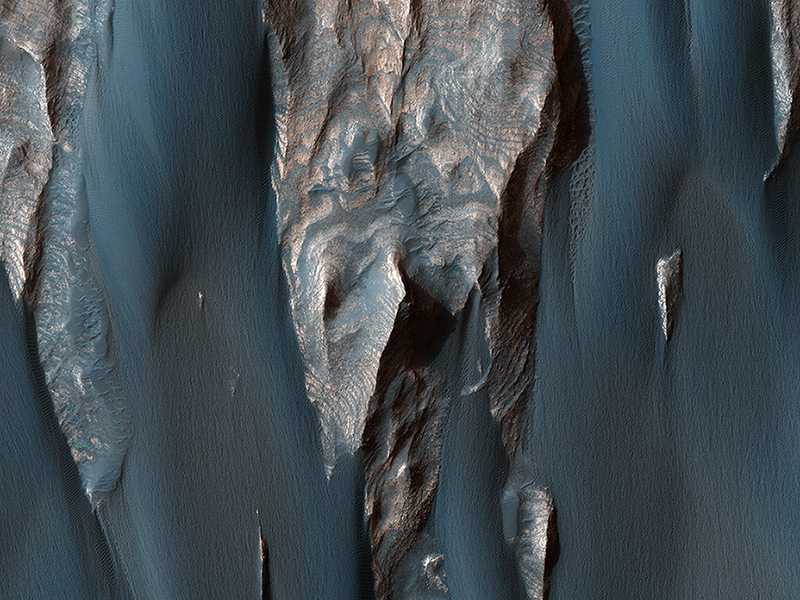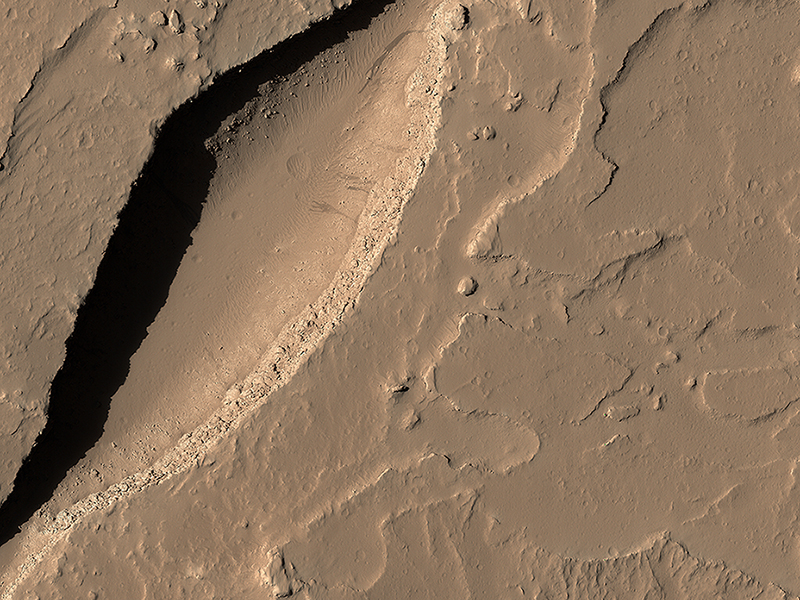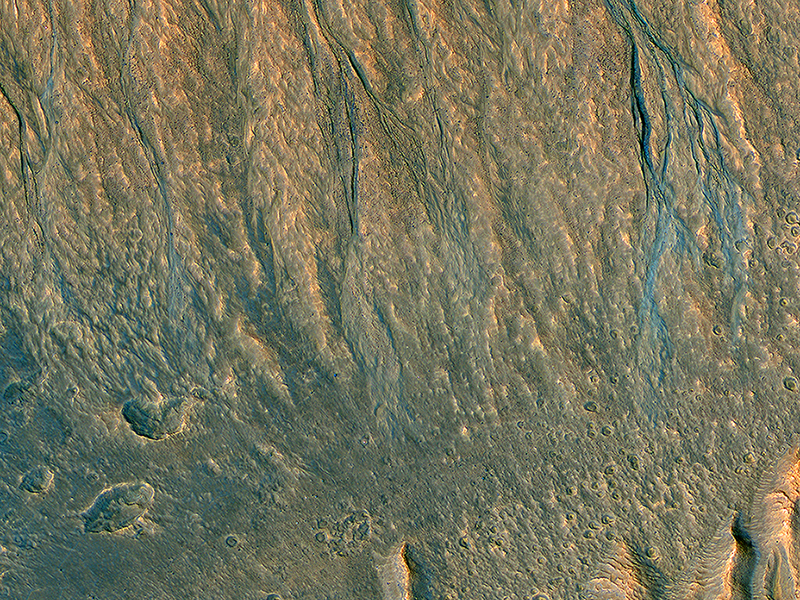Alfred McEwen wrote:How Old are Martian Gullies? (PSP_002293_1450)
Gullies eroded into the steep inner slope of an impact crater at this location appear perfectly pristine. Although at first glance it may appear that there are craters superimposed on the gully fans, inspection of HiRISE stereo coverage shows that the craters lie only on the pre-gully terrain.
Distinctive colors in the gully channels and alcoves offer another indication of youth and recent activity. The pre-gully landscape is covered by secondary craters from nearby Gasa Crater, estimated to be about 1 million years old. Although some have suggested that the Martian gullies are also about a million years old and formed in a different environment, we now know that they are continuing to form today.
Kristin Block wrote:Windblown Sand in Ganges Chasma (ESP_019507_1725)
Dark, windblown sand covers intricate sedimentary rock layers in this image from Ganges Chasma, a canyon in the Valles Marineris system.
These features are at once familiar and unusual to those familiar with Earth's beaches and deserts. Most sand dunes on Earth are made of silica-rich sand, giving them a light color; these Martian dunes owe their dark color to the iron and magnesium-rich sand found in the region.
Kristin Block wrote:A Volcanic Fissure (ESP_019391_1960)
Although Mars is known for having the largest volcano in our Solar System, Olympus Mons, we also find small-scale volcanic features on its surface.
This fissure, less than 500 meters across at its widest point, lies in the Tharsis region and is believed to be a vent from which lava flowed in ancient eruptions.
The total volume of lava released from this fissure is much less than what would erupt from nearby volcanoes, but the mark left on the landscape is dramatic nonetheless.
This is a stereo pair with ESP_019325_1960.
Alfred McEwen wrote:Gullies with Color Anomalies (ESP_013944_1345)
This is an oblique view of gully deposits from the steep slope of an impact crater.
The deposits with anomalous (bluish) colors may reveal very recent activity, not yet homogenized by dust deposition, or there may be sand preferentially trapped in some places to give this appearance.
This is a stereo pair with ESP_013667_1345.
Credit: NASA/JPL-Caltech/University of Arizona
<< Previous HiRISE Update



